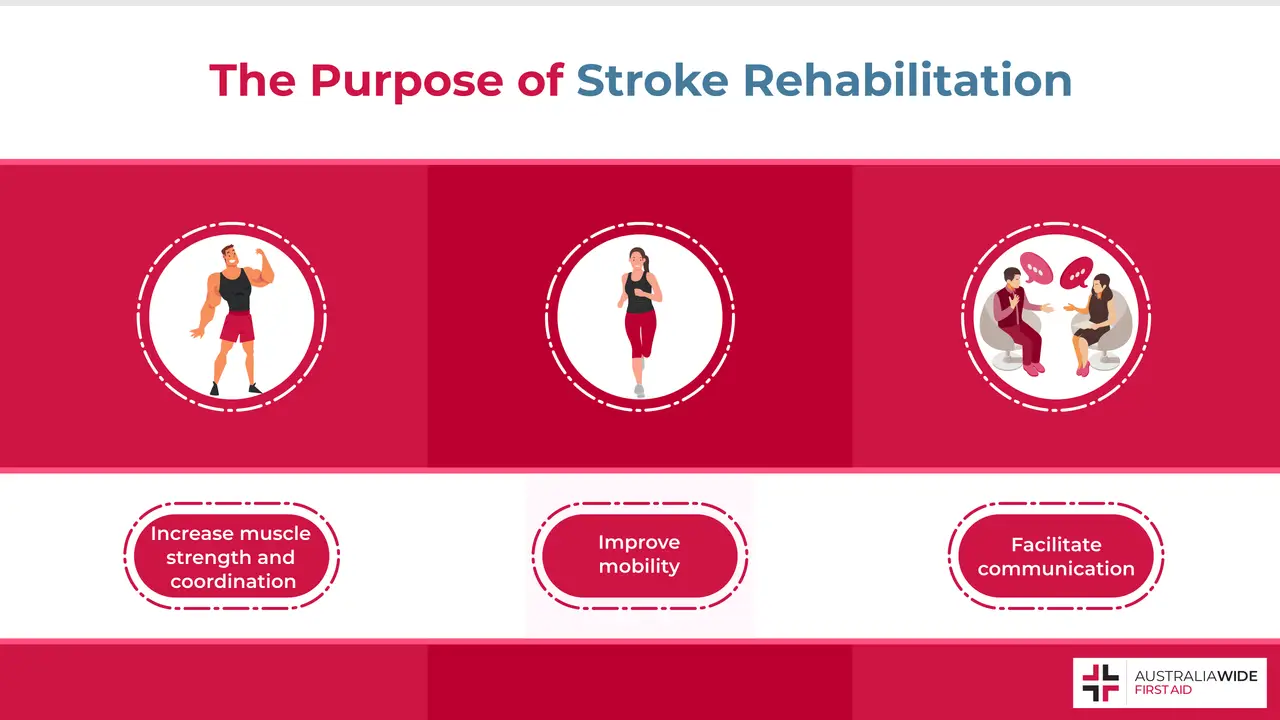Stroke Rehabilitation and the Road to Recovery


A stroke is a medical emergency in which the blood supply to a part of the brain is suddenly disrupted.
Without prompt medical treatment, stroke survivors can sustain permanent brain damage and long-term cognitive, emotional, and physical complications.
However, treatment is available to help stroke survivors improve the plasticity of their brain and learn to live with any disabilities they may have acquired.
Join us in this article as we explore the long-term complications of strokes, and the rehabilitation options available to help stroke survivors regain their livelihoods.
Before we delve into the long-term complications of strokes, it is important to firstly understand what strokes are.
A stroke can occur when an artery responsible for carrying blood to a part of the brain suddenly ruptures or becomes blocked.
Brain cells rely on blood to receive life-sustaining oxygen and nutrients. As such, when their steady supply of blood is suddenly disrupted, they can begin to die.
If the blood supply to the brain is not restored promptly, whole swathes of it can die, develop scar tissue, and subsequently leave the casualty with permanent brain damage.
Depending on which part of their brain is damaged, stroke survivors can sustain several different cognitive, emotional, and physical complications.
For more information about the risk factors and signs of stroke, check out the National Stroke Foundation and their annual awareness campaigns, including National Stroke Week.
Our brain is responsible for all our bodily functions, including our thoughts, emotions, and motor skills.
Our brain controls these functions using neurons (nerve cells), which communicate with one another using electrical impulses to relay information to, and receive information from, different parts of the body.
Given the enormity of its responsibilities, the brain is organised so that each hemisphere (half) takes carriage of one side of the body – specifically, the right hemisphere controls much of the body’s left side, while the left hemisphere controls much of the body’s right side.
Each hemisphere is further divided into lobes (areas) that oversee specific abilities.
As such, the complications that a stroke survivor can sustain depends on which lobe and hemisphere the stroke damaged. Below we look at the possible complications arising from stroke damage to the three primary parts of the brain: the cerebrum, the cerebellum, and the brain stem.
There are several treatment options available to help stroke survivors either: relearn old skills they may have lost when their brain was damaged; or, develop new ways of performing tasks to circumvent any disabilities they may have acquired.
Rehabilitation helps stroke survivors adapt to their brain injury through repetitive actions that stimulate the brain’s neuroplasticity, its ability to form and reorganise new neural (nerve) connections. Neuroplasticity subsequently allows the brain to move functions from its damaged areas to its undamaged areas.
According to the Stroke Foundation, it is important for stroke survivors to begin rehabilitation as soon as they are stable, as improvement is typically quickest in the first six months post-stroke.
The amount and type of rehabilitation a stroke survivor receives will depend on the nature and extent of their brain injury. Their specialist rehabilitation team will also consider how much therapy they can manage, whether therapy will significantly improve their daily life, and whether they are able to set and work towards rehabilitation goals.
It is typically recommended that their family and carers are also involved in any decision making about the rehabilitation process. This will ensure the stroke survivor's needs are always front and centre to the types of rehabilitation approaches that are decided on.
Healthcare professionals that may form part of their stroke rehabilitation team include:
Stroke rehabilitation plans naturally change over time as the person’s needs and skill levels change.
A stroke is a medical emergency in which the blood supply to a part of the brain is suddenly disrupted by a blocked or ruptured blood vessel.
The longer a stroke survivor goes without medical treatment, the greater their likelihood of developing long-term health complications. The nature of these health complications also depends on which part of the brain was damaged during the stroke, and can include impaired movement, critical thinking, and heart and breath functions.
However, several treatment options are available to help stroke survivors rehabilitate, relearn lost skills, and develop new ways to function. Stroke rehabilitation is a community effort involving not just the person affected by the stroke, but also their family, carers, and a suite of healthcare professionals that can include speech pathologists, occupational therapists, and physiotherapists.
With the help of their support network, people affected by stroke can once again partake in the activities that brought their life meaning.
For more information about the effects of stroke, book a First Aid course with us today. You can also head to our Article Library to learn more about stroke first aid, and how to identify and treat the symptoms of stroke.

May 1, 2025
Pterygium, also known as surfer's eye, is an ocular surface disease characterised by a growth of limbal and conjunctival tissue over the cornea. Fortunately, you can practice many eye health habits to help prevent the development of pterygium and other risks.

April 3, 2025
Tuberculosis is a severe bacterial infection that mainly affects the lungs and other parts of the body, including the nervous system. This contagious disease can quickly spread in crowded areas when an infected person coughs, talks, or sneezes.

February 13, 2025
Melioidosis is a bacterial infection caused by Burkholderia pseudomallei, a microorganism found in soil and water. This infection is often underdiagnosed due to symptoms mimicking many other illnesses. As such, awareness is critical for those living or working in affected regions.